Have you ever stood at a place so high, so remote, and so untouched by modern life that you feel like you’ve reached the very edge of the map? This place exists, and it is called Hikkim Village, a tiny, untouched village located deep within the cold, rugged mountain landscape of the Spiti Valley in Himachal Pradesh. For many Indian travelers, the journey to Spiti is a quest for raw adventure and spiritual silence, but the stop at Hikkim offers something entirely different: a profound connection to the world, sent via the most traditional of mediums.

Hikkim is internationally famous for holding a simple, beautiful, yet extraordinary title: it is home to the World’s Highest Functional Post Office. Located at an altitude of approximately 4,400 meters (14,400 feet) above sea level, visiting this post office is more than a tourist activity; it has become a mandatory ritual for every traveler.
To stand inside that small structure, to buy a postcard, and to write a personalized message to your loved ones (or even to yourself) from this incredibly remote location, gives you a feeling of deep satisfaction that no mobile network or instant chat can ever replicate. Travelers have mentioned in their anecdotes that it feels like sending a wish to the heavens from the roof of India.
Table of Contents
Historical Significance of Hikkim Village
The moment you mention Hikkim Village to anyone who has explored the Himalayas, their mind immediately jumps to one thing: the famous post office. This small, crucial building, sitting at over 14,400 feet, is far more than just a place to mail a letter; it is a powerful symbol of human resilience and the enduring need to connect, even from the most isolated corners of India.
The Postal Legend: History, Postmaster, and PIN 172114
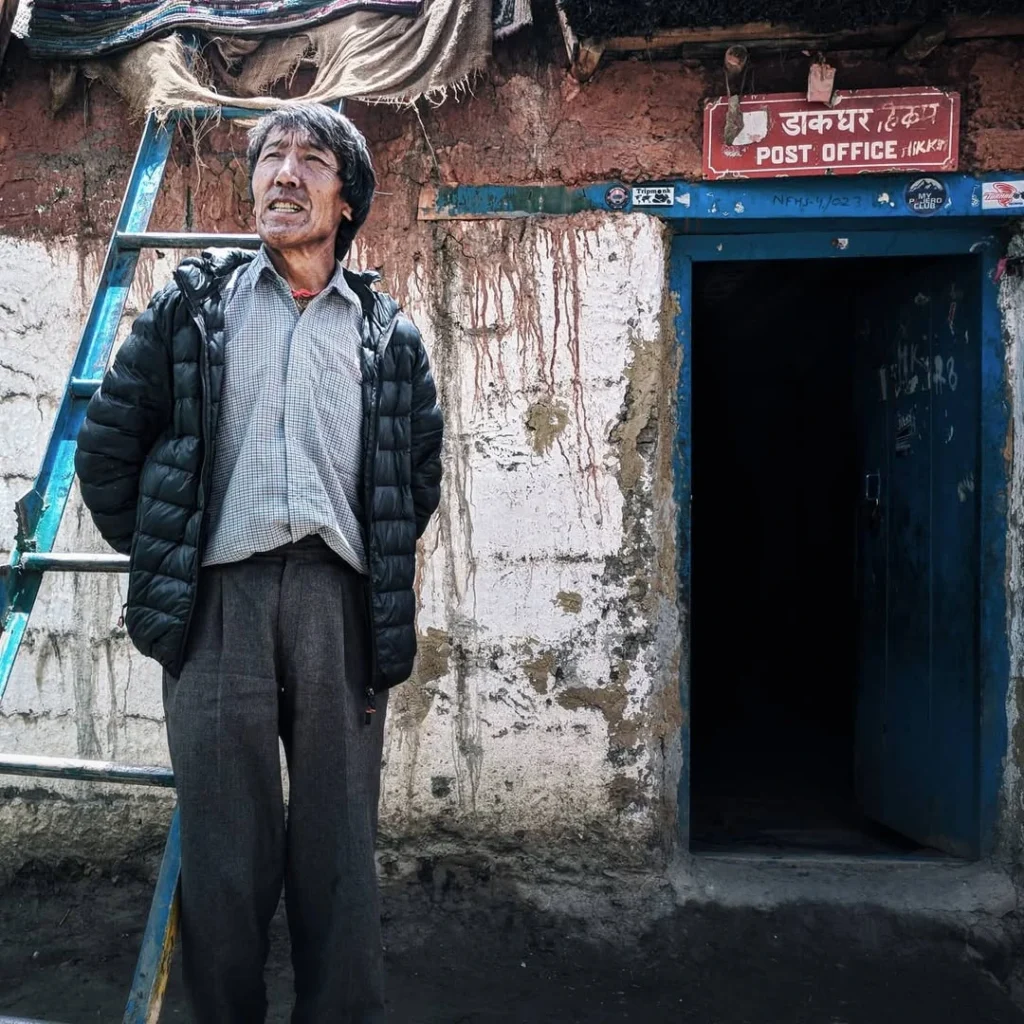
The story of the world’s highest post office is inseparable from the man who runs it. This essential communication link was established by the Indian Postal Service in 1983. Since its inception, the post office has been run by the dedicated postmaster, Rinchen Chhering, a local resident whose commitment to his duty has become legendary in the travel community.
For over four decades, he has been the single point of contact between this handful of Spitian villages and the outside world. He runs not only the postal service but also offers a limited savings bank facility to the local community, demonstrating the high importance of this single institution.
The Postal Index Number (PIN) code of Hikkim is 172114. The post office itself has recently undergone a visible change: while it started as a simple room within a traditional mud house, the exterior has been renovated into a recognizable, letterbox-shaped structure painted in the iconic red and yellow colors of the Indian postal service, making it an undeniable and unique landmark for tourists and locals alike.
- Post Office Hours: Monday to Saturday, 10 AM to 4 PM
- Entry Fee: No charge
- Postcard Price: ₹5 to ₹25 per postcard
- Stamp Charges: ₹5 for domestic mail, ₹20 for international mail
The Ritual of the Postcard: Why Vloggers and Tourists Love It
The act of sending a postcard from Hikkim has become an essential travel ritual, one that is prominently featured in nearly every Indian travel vlog or Spiti Valley documentary. Travelers, often riding motorcycles or driving their own cars up the challenging road from Kaza, make a beeline for this small building.
From the nervous excitement of buying the postcard from a local shop near the post office to the quiet concentration of writing the address, knowing the long journey the card is about to undertake, it is worth experiencing. You might have definitely come across this reference related to Hikkim via reels of travel vloggers or their youtube channels.
This ritual is popular because it provides a tangible memory of an incredible achievement. In an era where digital communication is easily forgotten, a physical postcard arriving weeks later, bearing the authentic, high-altitude postmark of Hikkim, is a treasured keepsake. It serves as a personal time capsule. Tourists spend time chatting with the postmaster, Rinchen Chhering, often finding him eager to share stories and a smile, making the visit a deeply personal and meaningful interaction with a Himalayan local.
The Journey of the Mail: From Hikkim to the Plains
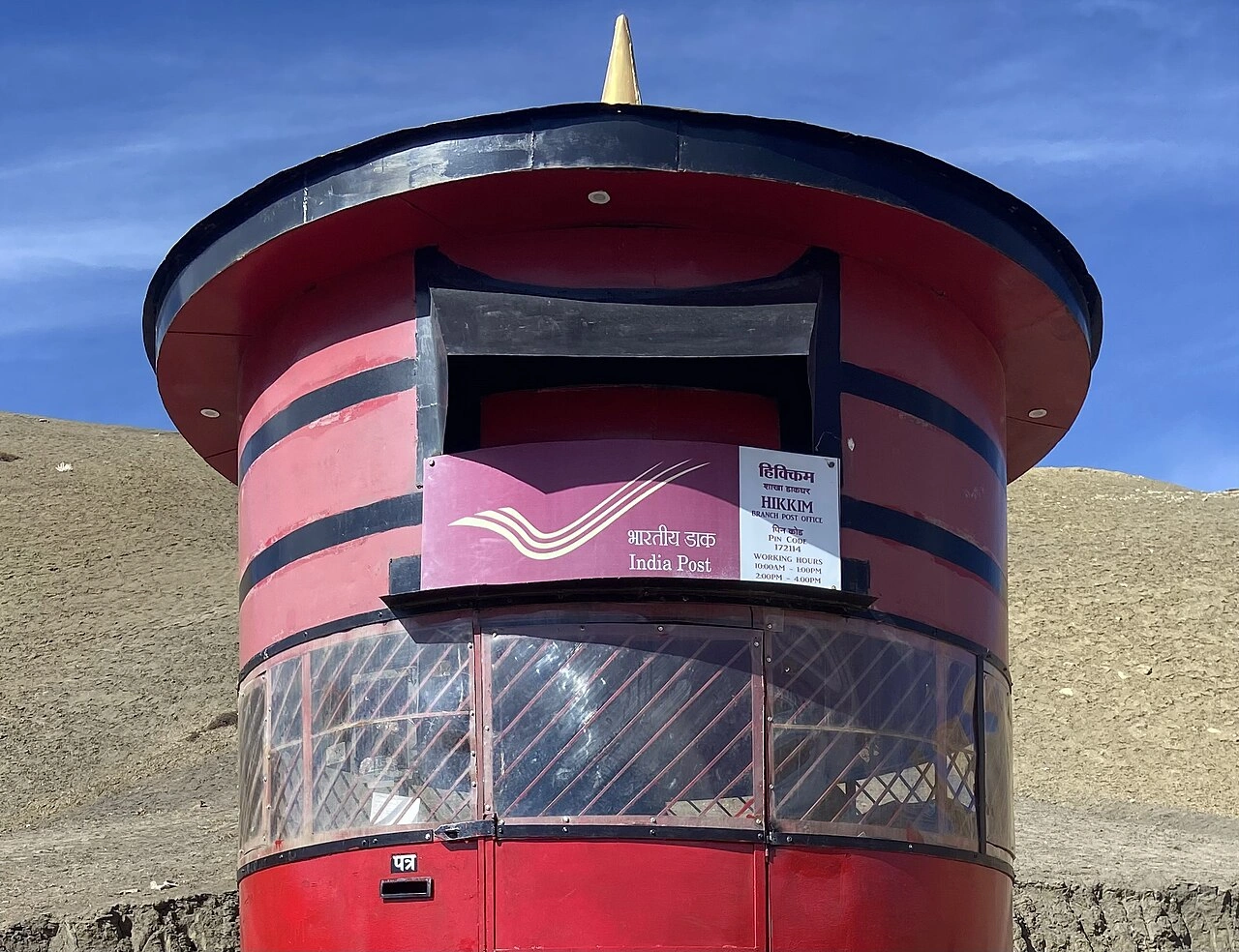
The journey for a postcard posted in Hikkim is long and begins with a simple, human effort. Every few days, the dedicated postmaster or a designated helper collects all the mail. The mail is then physically carried on foot (in extreme weather conditions) or via bus or shared taxi to the main hub, Kaza, approximately 15 to 20 kilometers away.
From Kaza, the mail is sorted and put onto the long-distance postal transport vehicles. These vehicles take the mail hundreds of kilometers down the tough mountain roads of the Spiti and Kinnaur Valley, often facing unpredictable road closures and delays due to landslides or snow.
The typical route involves the mail traveling from Hikkim to Kaza, then onwards to Reckong Peo, before finally heading down to Shimla or Delhi for further sorting and national distribution. This incredibly long and challenging journey, which can take anywhere from two weeks to over a month to complete, is why that simple postcard holds so much meaning upon its eventual arrival at the recipient’s home.
The Culture and Democratic Significance of Hikkim
While the post office is the primary magnet, Hikkim is much more than just a famous landmark. It is a genuine, year-round inhabited village that provides a clear window into the culture and resilience of the Spitian people who call this cold desert their home.

Traditional Architecture and the Six-Month Isolation
Hikkim, like its neighboring villages of Komic and Langza, features traditional Spitian architecture, designed specifically to withstand the harsh, long Himalayan winters. The houses are typically built using stone, sun-dried mud, and wood, which naturally insulate the interiors. The walls are thick, and the houses are often clustered closely together, providing collective warmth and protection from the high-altitude winds. The uniform appearance of the whitewashed walls is instantly recognizable in photographs and travel videos.
Life here is exceptionally hard, especially during the winter months. Due to heavy snowfall on the high mountain passes like Kunzum, Hikkim and the surrounding villages become virtually cut off from the rest of the world for nearly six months of the year (roughly November to May). During this time, the villagers rely entirely on their stored provisions, maintaining a resilient and self-sufficient lifestyle.
From Highest Polling Station to Highest Post Office
Before Hikkim gained global attention solely for its post office, it held another record of significant national importance. For many years, Hikkim was officially recorded in the Limca Book of Records as hosting the World’s Highest Polling Station. This fact is often mentioned to highlight the importance of democracy even in the most remote corners of the country.
During the election season, the entire process; from setting up the voting booth to ensuring local residents, regardless of the challenging travel conditions, could cast their vote, was a powerful boost to India’s commitment to democratic participation. Although the record has since been passed to the even higher village of Tashigang (also in Himachal Pradesh’s Lahaul and Spiti district), Hikkim’s history as a record-holding polling station remains a proud element of its identity. This history adds another layer to Hikkim’s role as a vital connection point, both for communication and for democracy, on the roof of the world.
Unique Geology: The Connection to Ancient Fossils
Like the neighboring Langza Village, Hikkim also sits on geological ground that tells an incredible ancient story. The entire Spiti Valley was once submerged under the Tethys Sea, an ocean that disappeared millions of years ago when the Indian tectonic plate crashed into the Eurasian plate, pushing the seabed upwards to form the Himalayan range.
If you have a taste for ancient history, this place will prove to be your haven. Due to this history, the sedimentary rocks in and around Hikkim are rich with ancient marine fossils. Visitors, especially those who take time to walk the village paths and surrounding fields, can sometimes spot fossilized crustaceans, ammonites (spiral-shaped shells), and other remnants from the Jurassic era.
Best Time to Visit Hikkim
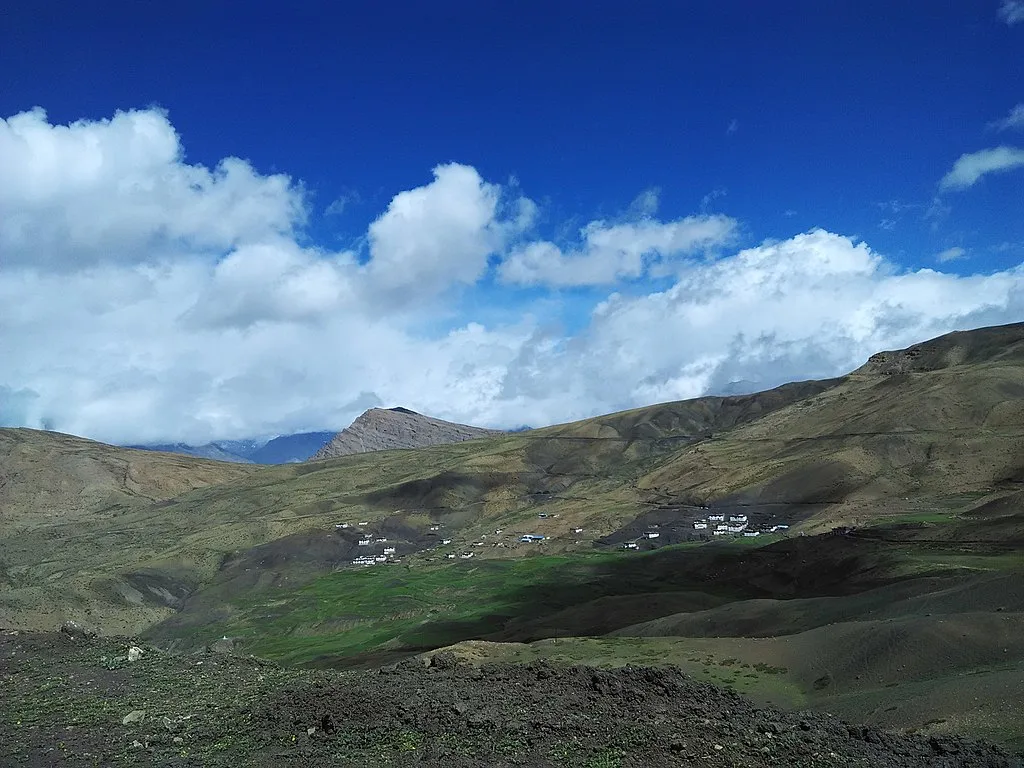
The Ideal Travel Window: June to Mid-October
The best time to visit Hikkim and the entire high-altitude Spiti circuit is during the short summer and autumn period, specifically from June to mid-October. During this time:
- Road Accessibility: The two main routes into the valley; the Shimla-Kinnaur route and the Manali-Kaza route (via Kunzum Pass/Atal Tunnel); are generally open and motorable. The road to Hikkim from Kaza is clear of snow, though still rugged.
- Weather: Days are pleasant, with temperatures ranging between 15°C and 25°C in the summer (June/July), making the uphill climb comfortable. September and October are colder, with clearer skies, offering the best conditions for photography and stargazing, and temperatures falling rapidly towards freezing in the evenings.
Mandatory Acclimatization
- The Golden Rule: Never rush. The best way to acclimatize is by spending time at gradually increasing altitudes.
- Base Camp at Kaza: Since Hikkim is nearly 2,000 feet higher than Kaza, travelers must spend at least two full nights in Kaza (12,500 feet) before attempting the day trip to Hikkim, Komic, and Langza. Kaza offers medical facilities and is the ideal place for your body to start adjusting to the thin air.
When not to Visit Hikkim?
- Winter (November to May): Hikkim is essentially closed off. Heavy snowfall blocks the Kunzum Pass, and roads even within the Spiti Valley become impassable. Temperatures drop well below -20°C, and most facilities, including the post office, shut down for the season.
- Monsoon (July and August): Although Hikkim is in a rain-shadow area and sees little rain, the access road through Kinnaur (the Shimla route) is highly prone to severe landslides and prolonged road blockages, making travel risky and unpredictable.
How to Reach Hikkim? The Perfect Travel Guide
First Stop: Reaching Kaza (The Main Base)
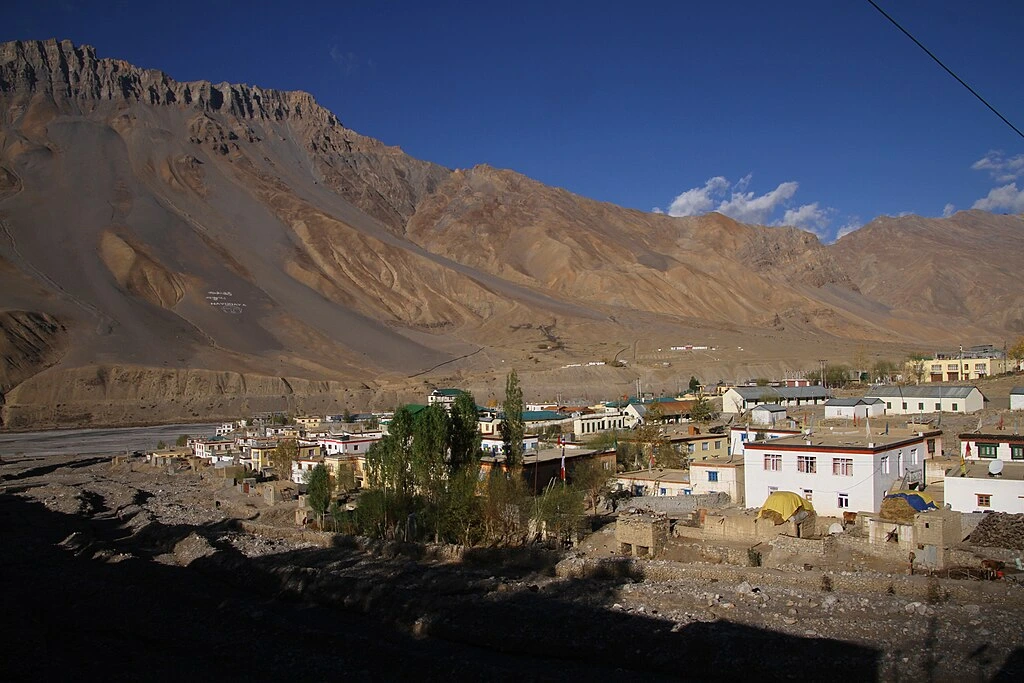
Travelers reaching Kaza typically follow one of two routes, both covered in detail for our travel enthusiasts:
- The Kinnaur Route (Via Shimla): This is the safer and more gradual route, taking 3–4 days to complete. It involves steady altitude gain through the challenging Kinnaur Valley (Reckong Peo, Nako, Tabo) before reaching Kaza. This route is preferred for better acclimatization.
- The Manali Route (Via Atal Tunnel): The shorter, more adventurous route, typically taking 2 days. While faster, it involves rapid altitude gain via the Atal Tunnel and the difficult Kunzum Pass descent, demanding more caution and rigorous acclimatization in Kaza.
Once you have successfully reached Kaza, your journey to Hikkim unfolds, bringing with it countless memories and wholesome experiences.
The Uphill Drive
Hikkim is located approximately 15 to 20 kilometers from Kaza, but the drive is steep, winding, and demands careful driving. The road connects Kaza to the high villages of Hikkim, Komic, and Langza, often done as a loop (complete Spiti circuit).
- Road Quality: The road is entirely paved. It features sharp hairpin bends and steep inclines and the drive typically takes around 45 minutes to an hour from Kaza.
- Recommended Vehicle: It is strongly recommended to use a vehicle with high ground clearance (like a SUV, MUV, or a sturdy bike). Low-slung sedans or hatchbacks can be difficult to manage on this terrain.
- Taxis: The easiest and most common way to reach Hikkim is by hiring a local taxi (often a Bolero/Maruti Gypsy or Jimny) from the Kaza taxi stand. Drivers are highly experienced on the local routes and usually offer a fixed price for the Kaza-Langza-Komic-Hikkim circuit, allowing you to cover all three iconic villages in a single day.
Places to Visit Enroute Hikkim Village
The visit to Hikkim is rarely a standalone trip. It is part of a famous high-altitude circuit originating from Kaza, which includes other sites of spiritual, geographical, and cultural importance. Everybody completes the Spiti circuit, but not many know of these places, which are quite accessible and offer an enriching experience:
Key Gompa
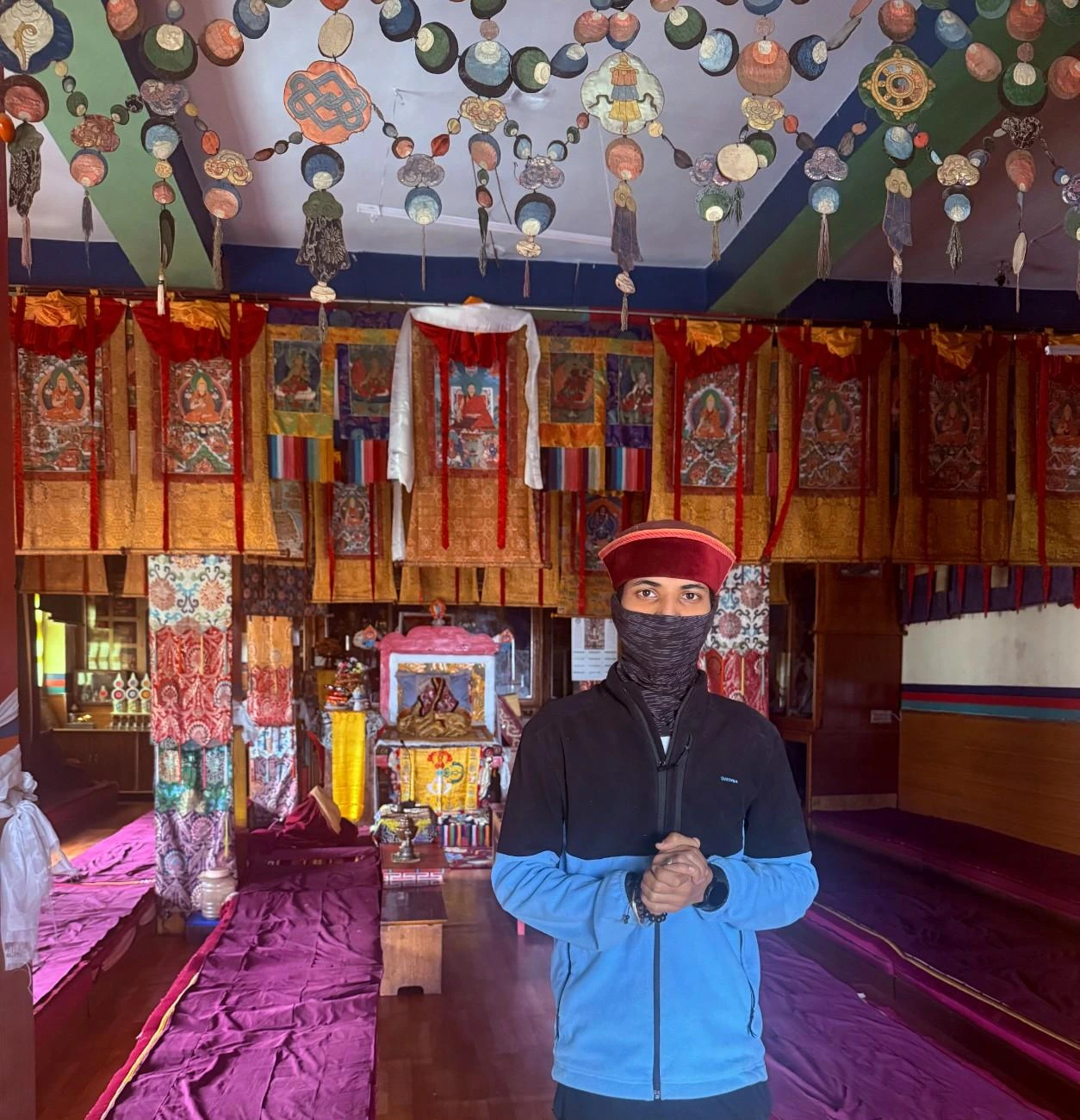
No trip to Spiti is complete without visiting Key Monastery (Key Gompa), which is the largest and arguably the most recognizable monastery in the entire Spiti Valley.
- Location and Significance: Situated on a solitary hillock overlooking the Spiti River, Key Gompa is about 15 kilometers north of Kaza. The monastery’s appearance; a cluster of white buildings piled haphazardly on top of each other, resembling a fortified castle; is breathtaking. It is home to hundreds of lamas and houses ancient murals, valuable scriptures, and unique Thangka paintings.
Losar Khas
Located approximately 58 kilometers north of Kaza, Losar Khas is a crucial stop for any traveler entering the Spiti Valley from the Manali side, especially after crossing the Kunzum Pass.
- Geographical Importance: Losar sits at an altitude of about 4,090 meters (13,420 feet) and is one of the first permanently inhabited villages you encounter in the valley. It is located at the confluence of the Losar and Spiti rivers, offering wide, beautiful vistas of the Trans-Himalayan desert. The valley floor here is noticeably wider than near Kaza.
- Acclimatization and Logistics: Losar acts as an important stopover point for travelers arriving late from Manali. It offers simple homestays and small eateries serving basic but warm Tibetan-Spitian food like thukpa and momos. It is a vital spot to break the journey, relax, and check road conditions before proceeding further into the valley. Losar also has a small post office (a Branch Post Office), though it is not the famous one.
- Base for Kunzum Pass: The village is the last inhabited spot before the ascent to the high-altitude Kunzum Pass, making it an essential refueling and information point for drivers and riders.
Kibber Village
Located about 18 kilometers from Kaza, Kibber is historically significant and is often linked with Hikkim and the circuit villages.
- Altitude and Sanctuary: Kibber sits at a high altitude and serves as the gateway to the Kibber Wildlife Sanctuary. This area is known among wildlife enthusiasts and nature photographers as one of the best spots in India to potentially sight the Snow Leopard, particularly during the winter months. Even in summer, the chances of seeing Himalayan Ibex and Blue Sheep are high.
- The Chicham Bridge: Though Kibber itself is famous, it gained further notoriety due to its proximity to the Chicham Bridge. Built over a gorge and connecting the villages of Kibber and Chicham, this bridge is often claimed to be the highest suspension bridge in Asia. Travelers regularly combine the trip to Kibber with a visit to this engineering marvel to experience the dizzying heights and spectacular views of the deep valley gorge below.
Conclusion
Team Himalayan Dream Treks regularly organizes Himachal village tours and the Spiti Circuit. You can check our offerings or contact us directly at info@himalayandreamtreks.in
Going to Hikkim feels as wholesome as going to the rooftop of your childhood home to get some clarity and peace of mind. You are sure to feel a nostalgic connection, however small. Even the breeze of Hikkim has stories to tell. When you send that postcard from the highest post office, you are not just sending a letter; you are sharing a piece of the pure, uncompromising soul of the Himalayas.
That small, stamped card is a testament to your own hard work and motivation in reaching the roof of the world. It is an experience that changes your perspective and stays with you long after the mountain dust has been washed from your shoes. The memories of this place are sure to get stuck to your heart, just like the postcard gets stuck to the letter!

Leave a Comment